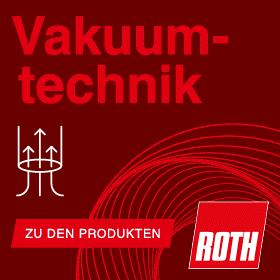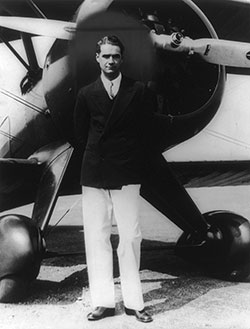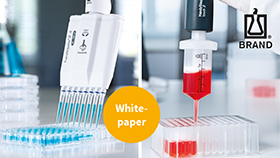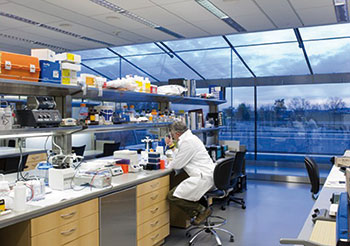Pennies from Heaven
US: The Howard Hughes Medical Institute
Career strategies for young European scientists
by Ralf Schreck, Labtimes 01/2012
As a student or scientist involved in biomedicine or life sciences you may have already come across researchers affiliated with the Howard Hughes Medical Institute (HHMI). Many of us - at least on the European side - do not know too much about this organisation, except that outstanding science and substantial financial resources are associated with it.
The HHMI was founded by aviator and US billionaire Howard Hughes in 1953 and has matured over the decades into a primary research organisation. As a matter of fact, together with the Bill and Melinda Gates Foundation and the UK Wellcome Trust, it is among the three leading biomedical philanthropic organisations worldwide.
The basics
Last year, the Howard Hughes Medical Institute disbursed about $900 million for basic and biomedical research, infrastructure and science education. At the core of the HHMI are 330 carefully selected HHMI Investigators, who are spread over 70 US institutions. Scientists from abroad are supported through international programmes. Moreover, the HHMI has recently opened its own playing ground, the Janelia Farm Research Campus. Here, Lab Times will shed some light on the HHMI and on ways in which you might get involved.
The early history of HHMI is closely linked to its founder Howard Hughes. Hughes had a flamboyant lifestyle and colourful personality. He was not only one of the world’s wealthiest businessmen but also an engineer, an aviator holding several flight records and film producer. He dated Ava Gardner, Katharine Hepburn and other film starlets. The first forty years of his life have been covered in the Oscar-winning biographical movie “The Aviator” starring Leonardo DiCaprio.
Hughes gained control over the majority of shares of the Hughes Tool Company at a young age. The company was based on patents for an oil drill bit, which had been secured by his father. Howard Hughes transformed Trans World Airlines (TWA) into a major international airline and started the Hughes Aircraft Company, which became one of the most important defense contractors in the US. Influenced by the early death of his parents, the 20-year old Hughes made allowances in his Will to set up an institution supporting biomedical research in his name. However, besides discussions about the best way to support medical research, no further steps were taken in the following 25 years. Six physician scientists were eventually appointed as Howard Hughes Medical Research Fellows in 1951 and paid personally by Hughes.
The Howard Hughes Medical Institute itself was launched in 1953 and received the status of a tax-exempt charity. In a brilliant move, also called tax evasion by others, Hughes transferred his shares of the Hughes Aircraft Company to the HHMI. As a result of the complex financial coup, the HHMI started with no endowment, a debt of several million dollars and only $45,000 to be spent on research in the next year. The Internal Revenue Service challenged the tax-exempt status of the HHMI for a long time. A final settlement was not reached until 1985, when the Hughes Aircraft Company was sold to General Motors (GM) for more than $5 billion. As part of the deal, the HHMI agreed to disburse annually at least 3,5% of its assets on biomedical research. Whereas in the early period less than $3 million a year were spent for research on average, expenditures jumped up to more than $50 million in 1983. After Hughes’s death in 1976, neuroscience, immunology, cell biology and genetics became priority research topics.
Nobel laureates on the payroll
The sale of the Aircraft Company to GM brought fresh capital and facilitated the rapid expansion of funding activities. At the end of the eighties, the HHMI employed more than 1,600 people. A new headquarters and conference building was set up in Chevy Chase, Maryland, close to the National Institute of Health. The number of HHMI Investigators increased significantly over time. Several new programmes were introduced and included programmes for pre-college, undergraduate and graduate students and an international programme, which was initially limited to scientists in Canada and Mexico but later expanded to other countries. Nobel laureate Tom Cech became HHMI president in the year 2000. Plans to create a biomedical research centre were finally realised in 2006, when the Janelia Farm Research Campus was opened. The biochemist and transcription factor guru Robert Tjian became HHMI’s fourth president in 2009 and the first HHMI Early Career Scientists were announced. Last year, the total assets of the HHMI surpassed $18 billion, close to €14 billion, and the number of HHMI employees exceeded 3,000. Also on the HHMI payroll: 13 Nobel Prize winners including Thomas Steitz (ribosome structure and function, 2009), Jack Szostak (telomere function, 2009), Roger Tsien (discovery and development of green fluorescent protein, 2008), and Mario Capecchi (knockout mice, 2007).
A scientist’s paradise
Have you ever dreamed of doing just the things you are good at? Getting off your mind the fights with administration or the next deadlines for grant applications and progress reports? Becoming an HHMI Investigator takes you quite close to your dreams. However, the number of available positions is quite limited, the competition is stiff and the reviewers are hard to please. Many past applicants have had to recognise that they are not up to the mark or just do not fit into the HHMI world.
Currently, there are about 330 HHMI Investigators and the list of current and past HHMI Investigators reads like a Who’s Who of biomedical research. HHMI Investigators are selected through open competitions taking place at more or less regular intervals. Announcements may be restricted to a particular scientific topic or career stage. According to the HHMI philosophy, the goal of the selection process is to “identify researchers with the potential to make significant contributions to science”. Candidates are rigorously evaluated by members of the HHMI Medical Advisory Board or the Scientific Review Boards and by current and former HHMI Investigators. After acceptance, scientists become employees of the Howard Hughes Medical Institute. They receive for research purposes about $1 million or €750,000 a year, which may be used quite flexibly. They keep their faculty position and, if applicable, tenure at their home institution, which continues hosting their lab. A change of the host institution within the first five-year funding cycle is not permitted. A long-term agreement between the HHMI and the host institution regulates and pays for the use of labs and other amenities. Administrative support is provided by the HHMI and does no longer depend on the host institution.
The lab size of HHMI Investigators varies. Postdocs are not paid beyond a six-year period by the HHMI, irrespective of whether they have been supported by the HHMI or another organisation in the past. Doctoral students have to be financed from non-HHMI sources. The pay scale of HHMI Investigators is comparable to that of other scientists at their home institutions but merit-based hikes are negotiable. Annual progress reports are not required. If the HHMI scientist does not pass the evaluation at the end of the funding cycle, he is not kicked out immediately. Instead, he receives transitional support for a few years in order to adjust to the real world and apply for funding from non-HHMI sources. The HHMI Investigator is expected to spend at least 75% of his time on research. He may apply for additional competitive grants but is not allowed to perform commercially sponsored research.
Patent rights and licensing of inventions are on the host institution. Consulting is possible after review by the HHMI. When I was doing a postdoc in the lab of an HHMI Investigator a long time ago, I benefited from a special consulting arrangement. Instead of getting some cash from a company, the HHMI Investigator received two all-seasons courtside tickets for his favourite NBA team. Sometimes, when he was not able to make it, he passed the tickets to his lab members and we were sitting next to the guys who had already made a fortune in the soft- and hardware business. The atmosphere in a stadium with more than 15,000 basketball fans is spectacular and definitely something, which would help you to find some distraction from the daily lab routine.
Striving for excellence
The Howard Hughes Medical Institute was recently rated as the second best research organisation worldwide by the Excellence Report, which is based on the SCImago Institutions Ranking World Report 2011 but puts more emphasis on the quality of the research output. The HHMI was only excelled by the Whitehead Institute for Biomedical Research and left behind many other highly acknowledged institutions. But what are the secrets behind the success? A team from the National Bureau of Economic Research and MIT Sloan School of Management in Cambridge addressed this question and published its results in the RAND Journal of Economics last September.
Though it is somehow like comparing apples with oranges, the group checked about 70 HHMI Investigators appointed in the nineties against scientists receiving an Investigator-initiated Research Project Grant, also called R01, from the National Institute of Health (NIH). The funding strategy of the HHMI is focused on the individual scientist, tolerates failure, rewards long-term success by providing renewable grants, gives detailed feedback on applications and research performance and allows scientific freedom. In contrast, the NIH R01 is centred on a research project and characterised by a short three-year funding cycle. Failure is usually not forgiven upon renewal, in-depth feedback in general is not provided and the project is corseted into pre-defined project deliverables. Without going too much into detail, the authors carefully selected scientists from both groups with a comparable point of departure. As expected, the HHMI Investigators were more successful in the long run concerning various scientific output measures. More importantly, it turned out that HHMI Investigators more often widened the scope of their research or even explored hitherto unknown territory after being appointed. One of the authors’ main conclusions was that the HHMI funding strategy is “indeed driving scientific creativity and excellence by providing incentives to explore novel lines of inquiry”.
Education and early career support
About one tenth of HHMI’s annual expenditure goes into science education either as research grants for individuals or science education grants for institutions. Only opportunities for individuals will be covered in the following. The HHMI Professors Programme was established in 2002 and targets accomplished scientists wishing to develop new ways for undergraduate science education. They receive $1 million for four years with the possibility of renewal. Until now, 40 professors at universities all over the United States have received support. For example, the HHMI and University of Pittsburgh Professor Graham Hatfull developed the Phage Hunter programme, where students do hands-on lab work and isolate and characterise new bacteriophages from soil. Last year, a milestone paper describing some of the new isolates was published in PLoS One and co-authored by 192 students and faculty from 12 different schools (PLoS ONE, 6(1): e16329).
The HHMI is also offering a variety of fellowships, either as sole sponsor or in connection with other foundations and organisations. The HHMI Medical Research Fellow Programme supports research training for medical, dental and veterinary students enrolled at US schools. Students may conduct a year of full-time biomedical research at any academic or non-profit institution with the exception of the National Institutes of Health. In addition, there is a ten-week summer programme to do research in the labs of HHMI Investigators or at Janelia Farm. There is one application deadline per year. Other programmes, you may have heard of in the past, such as the Physician-Scientist Early Career Programme, the HHMI-NIH Research Scholars Programme or the Postdoctoral Researchers Programme, have been discontinued.
HHMI Early Career Scientists are appointed for a non-renewable six-year term. As HHMI Investigators, they are employed by the HHMI but remain faculty members at their host institution. Besides salary and benefits, a research budget of $1.5 million is awarded and special equipment, critical for the project, is financed. Early Career Scientists are not allowed to transfer their appointment to another institution during the funding cycle but may apply for HHMI investigator positions. Applicants, irrespective of nationality, must have a doctoral degree and have between two and six years of experience after being appointed to a tenure-track assistant professor or an equivalent position at selected US institutions. A first call for Early Career Scientists was made in 2008 and the demand for the announced 70 positions was quite high. Out of 2,000 applications 41 men and 9 women from 33 US institutions were finally selected and started in September 2009. A second competition round for Early Career Scientists is expected for this year.
Janelia Farm
Researchers funded by the Howard Hughes Medical Institute have been dependent on rented lab space for a long time. This changed in late 2006, when the HHMI opened the novel Janelia Farm Research Campus. Initial costs including development and construction have been estimated to be in the range of half-a-billion dollars, while the annual costs of operation are in the range of about $100 million. The roughly three square kilometre campus was planned and built from scratch and is located close to Dulles International Airport or about 30 miles away from Downtown Washington. Its name dates back to the thirties, when part of the property was named after Jane and Cornelia, the daughters of the owner.
The goal of the HHMI was not to create just another Cold Spring Harbor or similar high-profile institution but to develop a comprehensive concept, taking into account researchers’ needs and the HHMI’s philosophy about generating a stimulating environment fostering scientific creativity. The Uruguayan star architect Rafael Viñoly was hired to design the research facilities. Under the motto “cooperativity and flexibility” he favoured plans for setting up a 270 m long three-floor building instead of an 85-story research tower. The overall development of Janelia has been pushed by Drosophila geneticist Gerald Rubin, who has been Janelia’s executing president since 2003. Under his leadership two primary areas of interdisciplinary research have been followed up so far. First, the identification of principles governing information processing by neuronal circuits and, second, the development of novel imaging technologies and computational methods for image analysis. Currently, Janelia Farm has more than 400 employees including 50 lab heads and 100 visiting scientists and the final stage of development is still not reached. Janelia Farm has been recently covered extensively in Nature (vol. 479: 284-7 and 433-5).
No "scientific inbreeding"
The rules of employment at Janelia Farm secure a high quality of research and a certain turnover. Central points are no tenure, a small lab size, and intensive collaborations and interactions with resident and external researchers. Group leaders have a status comparable to HHMI Investigators, lead a group of up to six members and are appointed for initially six years. After a positive review, they may be invited either to stay at Janelia or to settle somewhere else as HHMI Investigator on renewable five-year contracts. Upon a negative review, they receive generous transitional funding for two years and may use that money either at Janelia or at a new institution.
Janelia Fellows are independent scientists running a lab with up to two additional members. They receive in general a five-year, non-renewable fellowship. There are two annual application deadlines for both positions: July 15 and December 15. Janelia Junior Fellows are postdocs pursuing an independent research project without own staff. They are mentored by two or more group leaders or fellows and appointed for up to three years with the possibility of a two-year extension. The next application deadline for fellow positions is March 1.
Regular postdocs may apply at any time by contacting the lab head of their choice. One-year appointments may be renewed for a period of up to five years. Since external funding is a no-go, Janelia made agreements with three foundations: the Helen Hay Whitney Foundation, the Life Sciences Research Foundation and the Jane Coffin Childs Memorial Fund. Thereby, the postdocs are able to benefit from the non-monetary aspects of these fellowships, while the financial aspects are taken care of by the HHMI. Janelia Farm also operates two smaller programmes for students: a summer school programme for undergraduates and a PhD programme, both with about 15 students each. The PhD programme is operated together with the University of Chicago and the University of Cambridge. In addition, students on the Neuroscience Graduate Programme of the Johns Hopkins University School of Medicine may conduct their thesis research at Janelia Farm. Students enrolled in the PhD programme spend their first year at the university and the following three years are completely devoted to research at Janelia. HHMI covers all costs associated with the PhD project including an annual fellowship of $30,500, a housing subsidy of $150 per month, health insurance and other benefits.
To avoid any kind of “scientific inbreeding”, dedicated meeting and visitor programmes are in place. The visitor programme provides not only lab space but also significant research support for external scientists. At present, there are about 55 ongoing projects with 100 visiting scientists from 16 countries. The programme is open to all career stages form the graduate student to the fully established investigator. Collaborations may be conducted as an individual together with one or more lab heads or as part of a project team with additional HHMI-funded staff. Arrangements are quite flexible. For example, you may be present only part of your time, while your co-workers continue with the project in your absence. Visits beyond twelve months are reviewed on an annual basis. In addition, funding is available for short-term visits of up to a few weeks. Resources may include travel, accommodation, use of shared resources, lab and office space, and salary support for the visitor and his staff. Applications may be turned in at any time and include a brief CV, description of planned research project and necessary budget and a list of potential collaborators at Janelia.
International affairs
Over the last two decades many non-US scientists received support from the HHMI International Research Scholar Programme. The programme provided primarily five-year grants totalling up to $450,000 to work on basic biological questions or disease mechanisms. There were multiple calls including one for scientists working in Latin America and Canada, one for researchers from the Baltics, Central and Eastern Europe, Russia and Ukraine, as well as a third for non-US and non-UK scientists studying infectious and parasitic diseases. The programme is phasing out now and no new scholars will be appointed. However, a novel $24 million pilot programme, the International Early Career Scientist Programme, was recently launched. Upon success, the programme may be further expanded. In the first round, about 35 renewable five-year grants, worth $650,000 each, will be made available in early 2012: $250,000 in the first year and $100,000 in each of the following four years. Scientists working in one out of 18 countries are eligible to apply. On the European site, the Czech Republic, Hungary, Italy, Poland, Portugal, Spain and Turkey are covered. Host institutions will receive a $65,000 overhead. Applicants with a doctoral or medical degree must have completed their postdoctoral phase and been independent for less than seven years. A previous training period in the US is mandatory. In addition, at least two first or senior authorships in peer-reviewed English-language journals are required. Clinical trials are not supported but biomedical research on basic biological and disease mechanisms are. Disciplines related to medicine or biology, such as physics, chemistry, engineering or computer sciences are also considered.
In 2011, the HHMI also offered, for the first time, International Student Research Fellowships for non-US citizens graduating at US graduate schools. HHMI invited more than 60 US institutions hosting at least one HHMI investigator to nominate between one and ten students of their choice, depending on the size of their graduate programmes. Nominated students were invited by HHMI to apply online. The first call received 385 applications and finally 48 science and engineering students were selected from 22 countries. They receive an annual stipend of $43,000. Applicants must be in their 2nd or 3rd year of a PhD programme to be nominated and to receive support for their 3rd, 4th and 5th years of studies. The second call was published with a deadline on Dec 1, 2011. Awardees will be notified in June 2012 and commence the fellowship in September. For more details you may read the interviews of two international fellows in the accompanying Lab Times online editorial.
Bits and pieces
Several new initiatives got off the ground in 2010: the promotion of plant science research, a collaboration with South Africa on infectious diseases and preparations for a new journal. In recognition of the large impact of plant science research on biomedicine, the HHMI teamed up with the Gordon and Betty Moore Foundation (GBMF). GBMF was established by Intel co-founder Gordon Moore and his wife Betty, distributing grants amounting to a quarter billion USD each year. In frame of the agreement with HHMI, a one-time competition for plant science researchers at selected US institutions was launched. Out of 239 plant biologists applicants running their first own lab for at least four years, 15 were finally chosen and received a renewable five-year grant worth about $5 million each.
The KwaZulu-Natal Research Institute for Tuberculosis and HIV (K-RITH) is another high-profile initiative of the HHMI. The institute is located in Durban, a port city and major tourist hot spot on the east coast of South Africa. The goals of the cooperation with the University of KwaZulu-Natal are to conduct research on tuberculosis and HIV and to educate the next generation of scientists in the region. The groundbreaking ceremony of the new research building with bio-safety level 3 facilities took place in July 2011. Construction and recruitment of lead scientists shall be completed later this year. Via the South African Collaborative Grants programme scientists and students interested in research on HIV and tuberculosis from Africa and additional countries may benefit from the initiative. Various calls are scheduled for 2012.
Do we really need another scientific journal? The answer from the Howard Hughes Medical Institute is “YES”. The HHMI, the German Max Planck Society and the UK Wellcome Trust agreed to finance the launch of eLife, a new open-access online journal for top-tier biomedical and life sciences research. Highly regarded and still active scientists will be engaged as part-time editors, an efficient peer review process will be installed and the overall handling time from submission to publication will be minimised. Editors and reviewers will receive payment. Not all details are fixed yet and it remains to be seen how the new journal differs in the end from the established ones. Cell biologist Randy Schekman, HHMI Investigator and editor-in-chief of PNAS, was selected as founding editor. He was joined by UK stem cell researcher Fiona Watt and Detlef Weigel from the Max Planck Institute of Tübingen as deputy officers. The search for 20 senior editors and about 150 reviewing editors is ongoing. The first issue is scheduled for late 2012.
Summary
The ambition of the Howard Hughes Medical Institute is to do excellent science at the forefront of biomedical research. Becoming temporarily part of the HHMI world will not make you rich but brings prestige and, in some programmes, significant research funds. Therefore, it is not surprising that the demand for HHMI vacancies is great. A fellowship programme for foreign doctoral students at US institutions and an Early Career Programme for young group leaders working in selected non-US countries are in place. The Janelia Farm Research Campus offers additional opportunities for scientists from abroad to do a short- or long-term collaborative project with resident scientists. In particular, you may benefit from HHMI resources at Janelia, if you are engaged in research related to advanced imaging techniques and/or neural networks. Another way to profit from the HHMI is to contact an HHMI Investigator directly and try to work something out with him. If you come from a well-established lab and bring along your own fellowship, you may be more than welcome to join his well-funded lab. At least there is a chance that you will be engaged in a meaningful project and that your mentor, in comparison to other non-HHMI faculty members, will have more time to discuss the progress of your work.
Internet Resources
Last Changed: 13.07.2012










